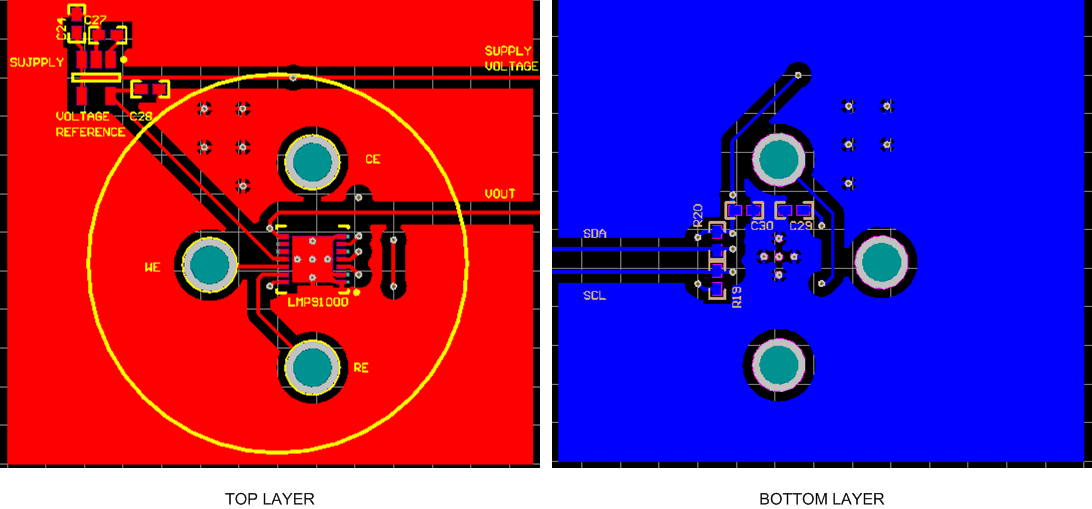ZHCSAR9I January 2011 – December 2014 LMP91000
PRODUCTION DATA.
- 1 特性
- 2 应用
- 3 说明
- 4 修订历史记录
- 5 Pin Configuration and Functions
- 6 Specifications
-
7 Detailed Description
- 7.1 Overview
- 7.2 Functional Block Diagram
- 7.3 Feature Description
- 7.4 Device Functional Modes
- 7.5 Programming
- 7.6 Registers Maps
- 8 Application and Implementation
- 9 Power Supply Recommendations
- 10Layout
- 11器件和文档支持
- 12机械封装和可订购信息
10 Layout
10.1 Layout Guidelines
The most critical point when designing with electrocemical gas sensors and the LMP91000 is the connection of the sensor to the LMP91000. Particular attention is required in the layout of the RE, CE and WE traces which connect the sensor to the front-end. The traces needs to be short and far from hifh freqency signals, such as clock. A way to reduce the lenght of the traces is positioning the LMP91000 below the gas sensor, this is possible with cyclindrical electrochemical gas sensor or on the oppoite layer in case of solid gas sensor or low profile gas sensor. In case of uasge of external transimpeance gain resistance it needs to be placed close to the LMP91000, the terminal of the resistance conencted to C1 needs to be far from high frequency signals.
10.2 Layout Example
 Figure 35. Layout
Figure 35. Layout